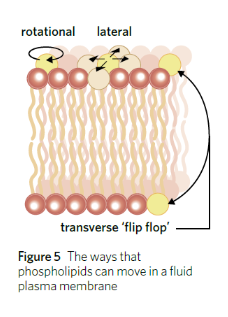Biology- Chapter 3A: Plasma Membrane
1/15
There's no tags or description
Looks like no tags are added yet.
Name | Mastery | Learn | Test | Matching | Spaced |
|---|
No study sessions yet.
16 Terms
phospholipid bilayer
a double layer of amphiphilic molecules that forms the primary component of cell membrane.
phospholipid molecule
a molecule consisting of a (hydrophilic) phosphate head and two (hydrophobic) fatty acid tails, essential for forming the phospholipid bilayer in cell membranes.
non-polar fatty acid tails
A pair of fatty acid chains which have no electrical charge and are hydrophobic (water fearing) and stay within the membrane itself.
polar phosphate head
A phosphate head is polar/ charged and hydrophilic (water loving) part of a phospholipid that is oriented towards the aqueous environment in the phospholipid bilayer.
hydrophobic
having a tendency to repel and be isolated in water.
hydrophilic
having a tendency to be attracted to and dissolve in water.
amphiphilic/ amphipathic
describes molecules with both hydrophilic and hydrophobic components (e.g whole phospholipid).
homeostasis
the tendency of an organism to maintain an optimal internal environment.
integral proteins
a protein that is permanently secured to the plasma membrane.
transmembrane proteins
an integral protein that spans the entire plasma membrane.
peripheral proteins
a protein that is temporarily attached to the plasma membrane.
cholesterol
a steroid alcohol (lipid molecule) that regulates the fluidity in plasma membranes.
the fluid mosaic model
the theory that describes how the plasma membrane is structured.

glycolipids
a phospholipid bound to a carbohydrate.
glycoproteins
a protein bound to a carbohydrate.
selectively permeable
a property of cell membranes that ensures only specific substances pass across them.